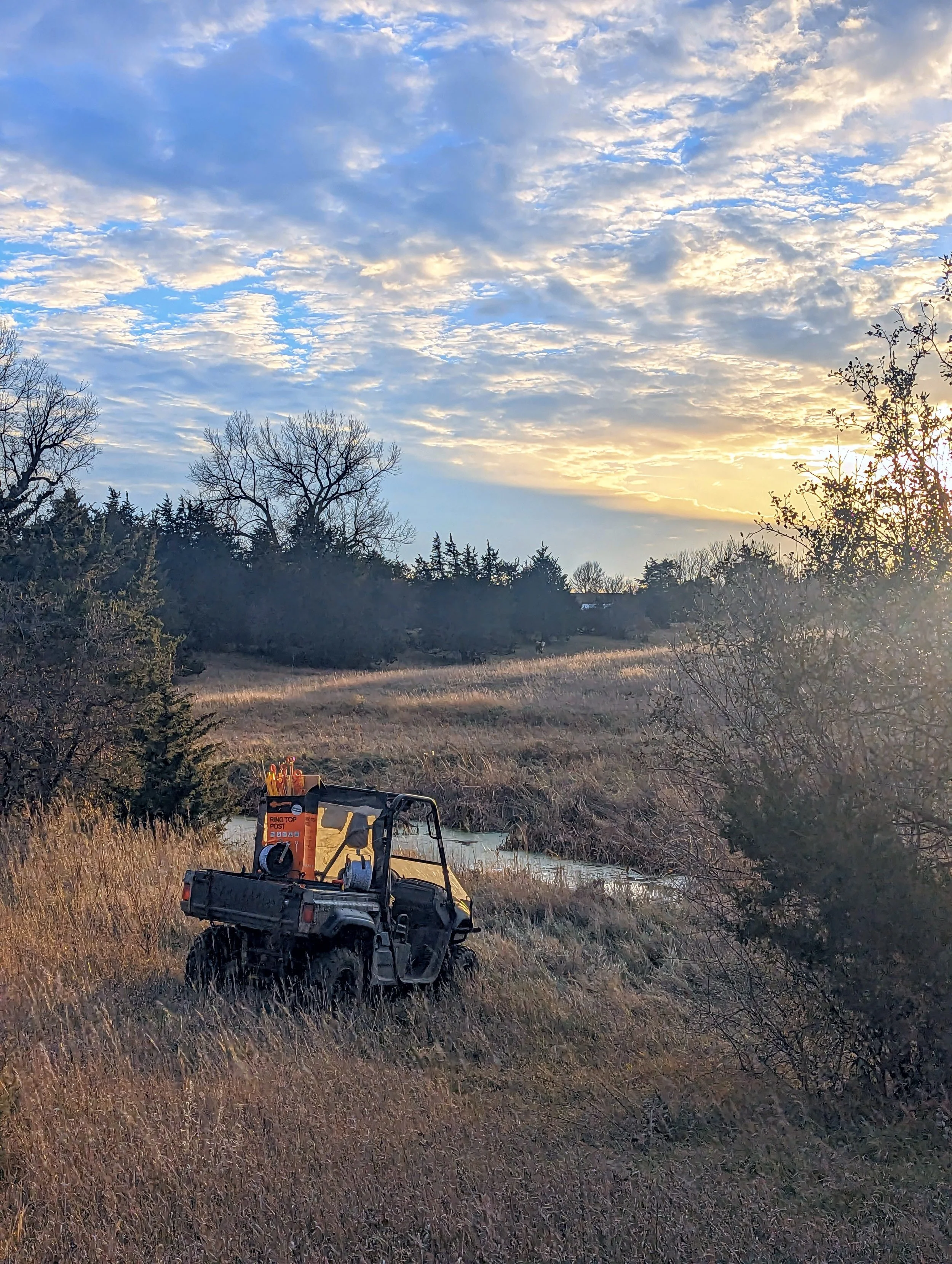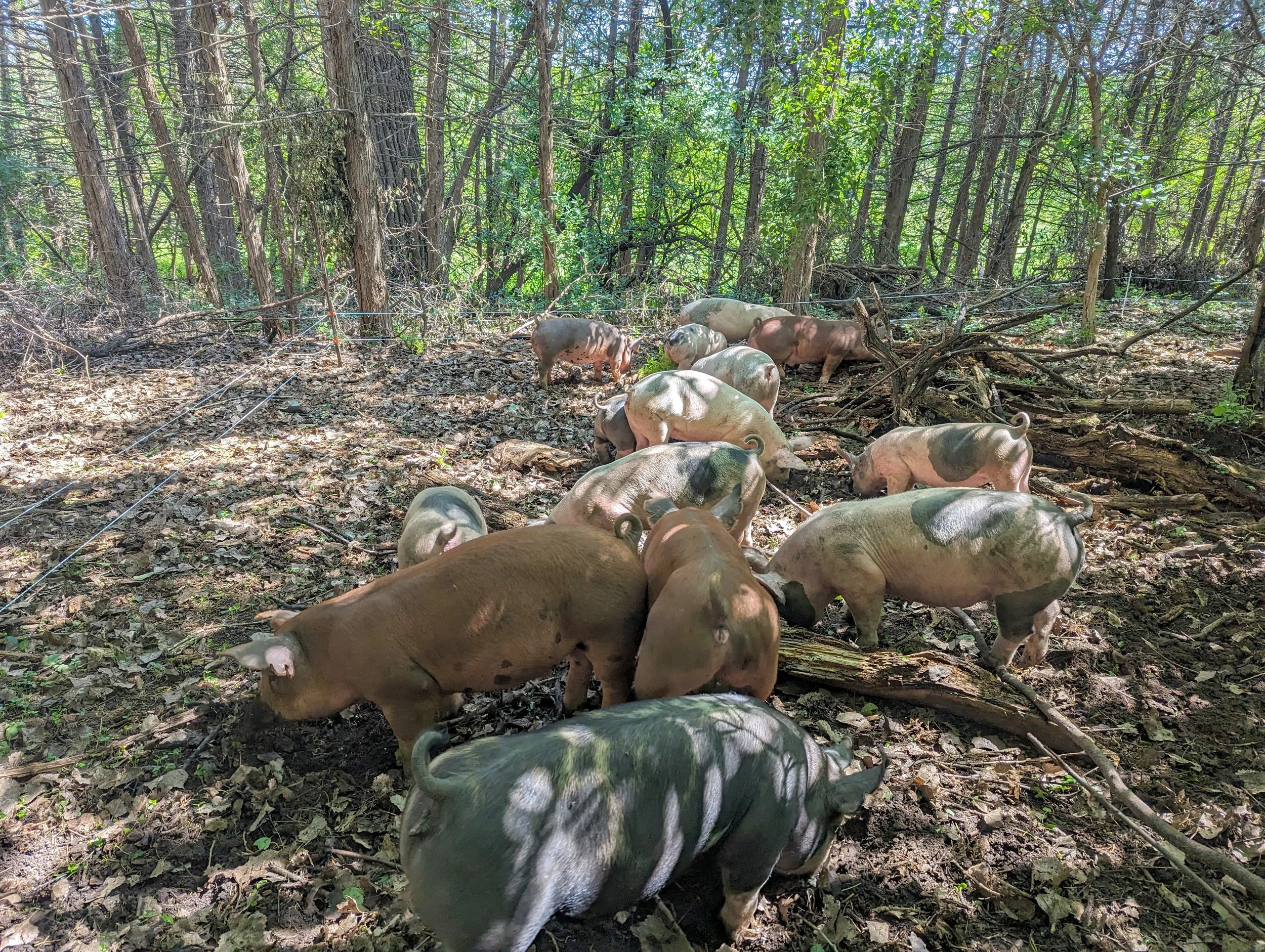Ruminations 24-04: Pastured Pork Commentary 4
If you stuck with me this long, you know about the video. This is the final major point made before a less pointed discussion was made about hogs and hog barns in general that encompass all the points then some. If you have read through the last 3 weeks’ discussions, THANK YOU! Whether you agree with what I am doing or with what folks at This’ll Do Farms/Barn Talk do, isn’t the point. It’s having these deep dive discussions and learning the how’s and why’s to help each other farm better. With that lets discuss the fourth topic: Weather
#4 Weather and Limited
Production Window
It is hard to refute his claim that here in the Midwest we are weather limited to half the year for outdoor production, especially with hogs. This is again a very true statement. There is a reason I only raise animals from about May to November each year. I don’t have the facilities or equipment to produce during the winter months. This ultimately limits the number of animals I can raise and makes the winter months lean in cashflow. Compared to confinement operations, my method does not compute or appear to be profitable at all, when looking at simply pounds of pork produced or $/day generated.
All that said, what is the true cost of raising hogs in confinement all year round? I am not talking about money for costs, I am talking about all the additional costs not on the balance sheet. by producing 2 times the amount of pork, because you operate all 12 months instead of 6, you generate 2 times the manure and require 2 times the feed and water. That’s twice the compaction on soils, twice the monoculture farmland, twice the water not recharging in the aquifer.
Without belaboring the point further, I would just pose this question: Does the value of an extended growing season justify the environmental and production costs to do so? If the answer is yes, more power to you. For me and my farm, it is a staunch no. Regenerating the land so it can take care of me, my family, and our customer base, is more important than the additional revenue… and costs.
If you have made it this far, I want to say thank you again. I will have one more discussion on this topic to tie it all up next week!
Ruminations 24-01: Pastured Pork: Commentary 1
Recently, I came across a video on Facebook that I felt the need to address. Here is the video from This’ll Do Farm and the guys from the Barn Talk podcast. Now full disclosure: I personally like these guys, disagree with a lot of their takes, but genuinely like them and their discussions. I feel they give you a better feel for the food system in the US from the producer perspective than another podcast I have found. Typically, we farmers in the regenerative space get boxed in being out of the box that we forget there is a box 90% of the producers in the US work in. This podcast gives a great and open perspective into that world. I disagree with a lot of what they say, but I also agree with the reasoning they have and cannot fault them for that. In fact you’ll see in the commentary, I actually agree with them on several of their points in the video, but not enough to build a hog barn.
I am going to do this is in five (5) different posts to address the 4 main reasons why raising hogs inside is better than outside. Towards the end of the video he has a few points that I will address that tie back to those 4 and farming and production as a whole.
That said, lets get hog wild…
#1: Sensitive Skin and Outdoor Hogs
This first issue brought up is hog skin sensitivity. In 3 years of raising hogs, sunburn has rarely been a concern of mine. This is mostly due to utilizing pasture acres that have dense red cedar and buckthorn growth and using the hogs to help wake the soil back up and rough up the weaker and younger trees. That being said, there is an issue with hog color that I have noticed.
Last year, we had berk/hamp crosses (white with black splotches) berk/duroc crosses (reds) and berk/landrace crosses (all whites in my sounder). The white skinned hogs did get a sunburn and did scratch more because of it. The reds and blacks? They were my best gainers and pretty bullet proof. You don’t need pink pigs. This year I am trying very hard to get all berk/durocs for this reason. But to say that sunburn is a big reason to move them indoors is looney.
Hogs of many shades being
Hogs in the shade
This also goes for folks that “need” shade structures or shelterbelts for their black cows to help them in the heat. I have an easy solution, red cows… but I digress.
Moral of the story, the stock animal can change to meet your needs. My hog needs are currently changing as I target in on the animal that best fits my system, sunburn be damned.
Next week we will check out concern #2: Erosion, Rooting and Soil Health.





